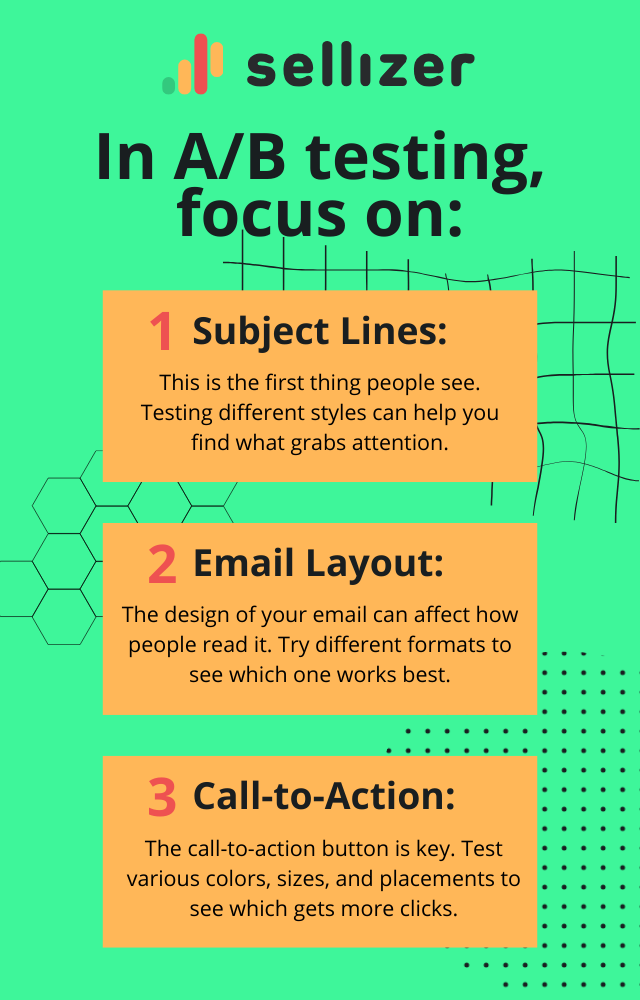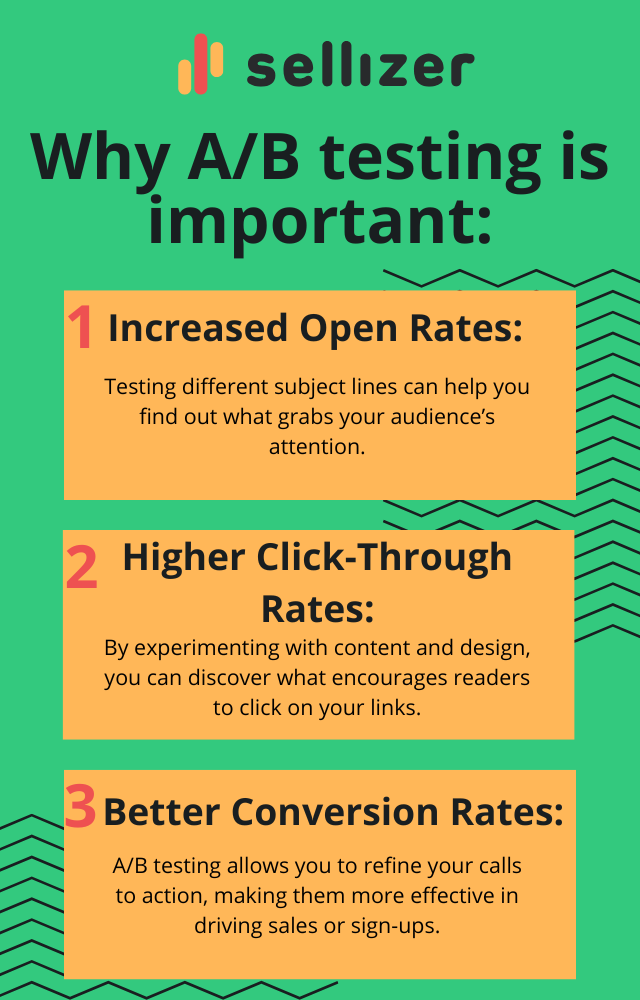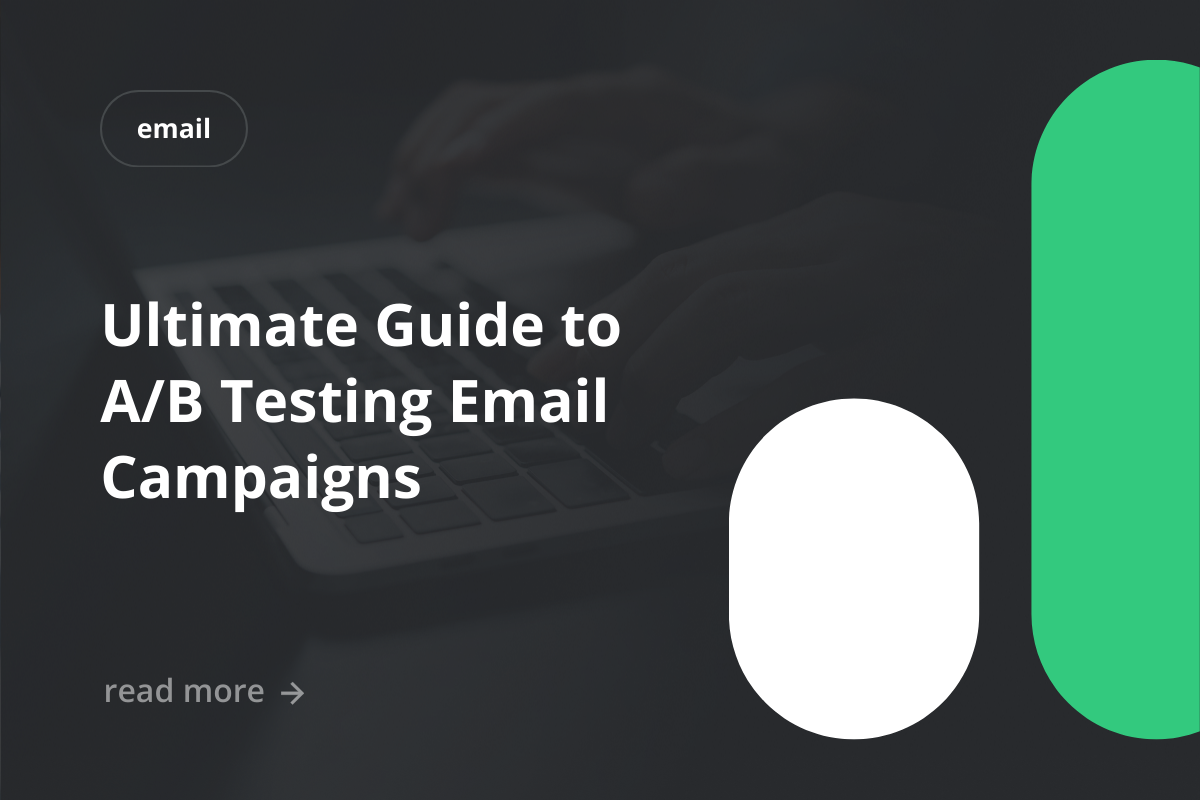Understanding A/B Testing Email and Its Impact on Marketing
Curious about how A/B testing can transform your email marketing? In this article, we’ll break down the essentials of A/B testing email and how it can significantly boost your campaign performance. Discover how testing different elements like subject lines and content can lead to better engagement and conversions. Whether you’re looking to refine your email marketing strategy or improve your results, this guide will give you the insights and tips to optimize every email you send. Dive in and learn how to take your email marketing to the next level!
What is A/B Testing in Email Marketing?
A/B testing, also known as split testing, is a method used in email marketing to compare two versions of an email. This helps marketers find out which version performs better. In this process, two different emails are created, each with slight changes. These changes can be in the subject line, design, or even the time the email is sent. After sending both versions to different groups of people, the results are analyzed to see which email got more opens or clicks. This method helps in making smarter decisions based on real data.
Why A/B Testing Email is Crucial for Your Email Marketing Strategy
A/B testing is not just a routine task; it is a vital part of improving your email marketing. By testing different elements, marketers can discover what their audience likes best. This leads to better engagement and higher conversion rates. Here are some key reasons why A/B testing is important:
Increases Open Rates: Testing subject lines can show which ones grab attention. If you want to learn more about improving your email open rates, check out our article: 5 Essential Tips for Improving Email Open Rates in Your Next Campaign
Boosts Click-Through Rates: By changing the design or content, you can find out what makes people click.
Enhances Overall Strategy: The insights gained from A/B testing can inform future campaigns, making them more effective.
A/B testing is like a treasure map; it guides you to the best way to connect with your audience.
In summary, A/B testing is a powerful tool that helps marketers understand their audience better and improve their email campaigns. By continuously testing and learning, businesses can achieve long-term success in their marketing efforts.
How to Use A/B Testing in Email Marketing for Maximum Effectiveness
Explore how to effectively utilize A/B testing in email marketing by identifying key elements to test, setting clear objectives, and applying data-driven insights to optimize your strategy for maximum results.
Key Elements to Test in A/B Testing Email Campaigns
When you start A/B testing, it’s important to know what to test.

Setting Goals and Hypotheses for Effective A/B Testing
Before you start testing, you need to set clear goals. Ask yourself what you want to achieve. For example, do you want more people to open your emails or click on links? Once you have a goal, create a hypothesis. This is a guess about what you think will happen. For instance, you might think, “If I make the subject line more personal, more people will open the email.”
Best Practices for Running A/B Testing Email Campaigns
To get the best results from your A/B testing, follow these practices:
Test One Thing at a Time: This helps you know what caused any changes in results.
Use a Large Enough Sample Size: Make sure you send your emails to enough people to get reliable results.
Analyze the Results Carefully: Look at the data to see which version performed better and why.
A/B testing is not just about finding a winner; it’s about learning what your audience likes and improving your emails over time.
Improve Marketing Results with A/B Testing Email
With A/B email testing, marketers can test campaign elements like subject lines and content to see what resonates. By analyzing the results, businesses can make data-driven adjustments to improve engagement, boost conversions, and enhance overall marketing performance.
Optimizing Open Rates and Click-Through Rates
A/B testing is a powerful tool that can help you improve your email marketing results. By testing different elements of your emails, you can find out what works best for your audience. This can lead to higher open rates and click-through rates. For example, you might test two different subject lines to see which one gets more people to open your email.
Testing Subject Lines, Content, and Timing
When it comes to A/B testing, there are several key elements you can focus on:
Subject Lines: The first thing your audience sees. A catchy subject line can make a big difference in whether someone opens your email. You can read more about subject lines here: How to Write Effective Email Subject Lines?
Content: The body of your email should be engaging and relevant. Testing different styles or messages can help you find what resonates with your audience.
Timing: The time you send your email can affect its performance. Testing different send times can help you determine when your audience is most likely to engage.
Maximizing Conversions Through Data-Driven Adjustments
Once you have your results, it’s important to analyze them carefully. Look at the data to see which version of your email performed better. This will help you make informed decisions for future campaigns.
Analyzing Results Using Email Marketing Analytics
Tracking Key Metrics to Measure Success
To truly understand how your email marketing strategy is performing, you need to track key metrics. These metrics help you see what’s working and what isn’t. Some important metrics to focus on include:
Open Rates: This shows how many people opened your email. A higher open rate means your subject line was effective.
Click-Through Rates (CTR): This tells you how many people clicked on links in your email. It’s a good indicator of how engaging your content is.
Conversion Rates: This measures how many people took the desired action, like making a purchase or signing up for a newsletter.
Leveraging Email Marketing Analytics to Improve Future Campaigns
Once you have your metrics, it’s time to analyze them. Look for patterns in the data. For example, if you notice that emails sent on Wednesdays have higher open rates, consider scheduling your future emails for that day. Using email marketing analytics helps you make informed decisions that can lead to better results in your campaigns.
Analyzing your email performance is not just about numbers; it’s about understanding your audience and improving your strategy.
By continuously monitoring and adjusting your approach based on these insights, you can enhance your email marketing strategy and achieve greater success.
Avoiding Common Mistakes in A/B Testing Email
A/B testing can be a powerful tool for improving your email marketing, but it’s important to avoid common pitfalls. One major mistake is testing too many variables at once. This can lead to confusing results and make it hard to know what actually worked. Instead, focus on one element at a time, such as the subject line or the call-to-action button. Here are some other mistakes to watch out for:
Not having a clear goal for your test.
Running tests for too short a time.
Ignoring the data after the test.
Continuous Improvement: Refining Your Email Marketing Strategy
A/B testing is not just a one-time activity; it should be part of your ongoing email marketing strategy. By regularly testing and refining your emails, you can keep improving your results. Here’s how to make A/B testing a regular part of your strategy:
Set a schedule for regular tests.
Keep track of what you’ve tested and the results.
Use insights from tests to inform future campaigns.
Remember, each test is a step toward better engagement and higher conversions.
By following these guidelines, you can make A/B testing a valuable part of your email marketing toolkit.
Conclusion: Why A/B Testing is Essential to Email Marketing Effectiveness
How A/B Testing Email Can Drive Long-Term Marketing Success
In today’s digital world, A/B testing is a game-changer for email marketing effectiveness. It allows marketers to compare different versions of emails to see which one performs better. This method helps in making informed decisions based on real data rather than guesswork. By understanding what resonates with your audience, you can create emails that not only get opened but also drive engagement and conversions.
A/B testing can lead to significant improvements in your email campaigns.

In conclusion, A/B testing is not just a tool; it’s an essential part of a successful email marketing strategy. By regularly testing and optimizing your emails, you can ensure that your marketing efforts yield the best possible results. So, don’t hesitate to experiment and find out what works for you!
Frequently Asked Questions
What is A/B testing in email marketing?
A/B testing in email marketing means comparing two different versions of an email to see which one works better. You send one version to one group and the other version to a different group, then check which one gets more opens or clicks.
Why is A/B testing important for emails?
A/B testing is important because it helps you understand what your audience likes. By testing different elements, you can improve your email performance and get better results.
What should I test in my email campaigns?
You can test many things in your emails, like subject lines, images, content, and send times. Each of these can affect how well your email performs.
How do I set up an A/B test for my emails?
To set up an A/B test, first decide what you want to test. Then create two versions of your email with one change. Send them to different groups and see which one does better.
How long should I run an A/B test?
You should run an A/B test for at least two weeks to get enough data. This helps ensure that your results are accurate and not just due to chance.
Can A/B testing really help increase my email open rates?
Yes! A/B testing can help you find out what subject lines or content your audience likes best, which can lead to more people opening your emails.



